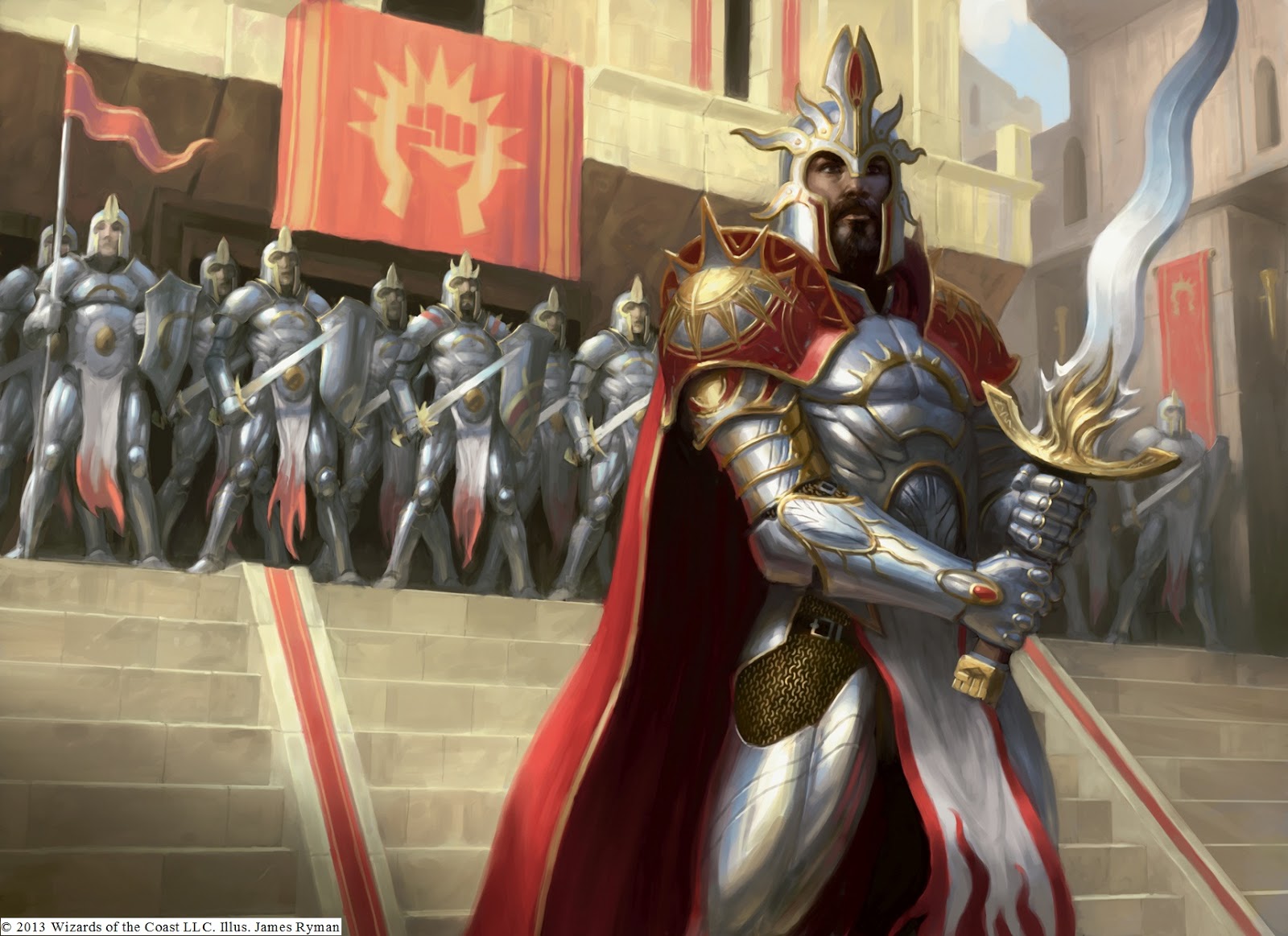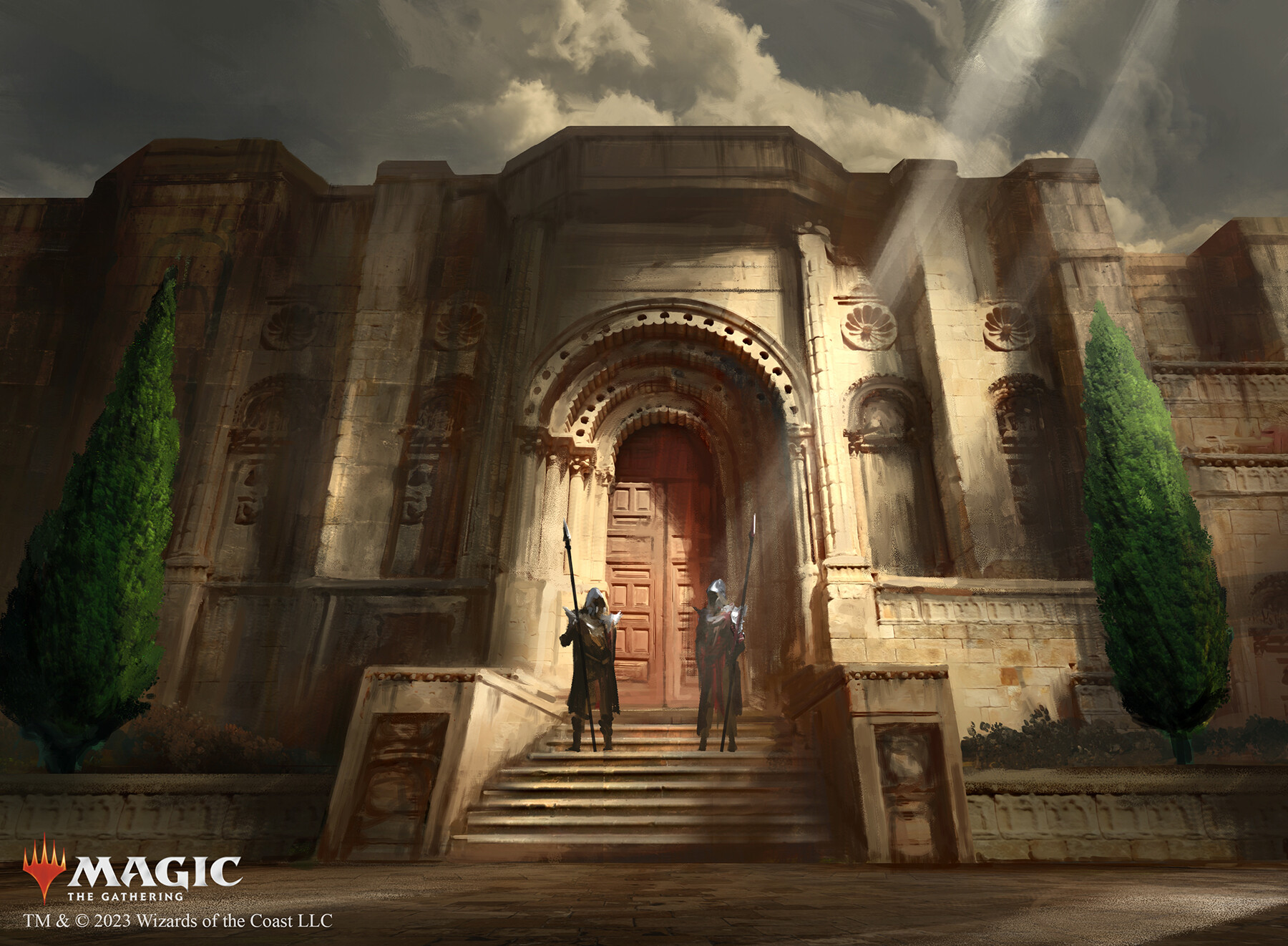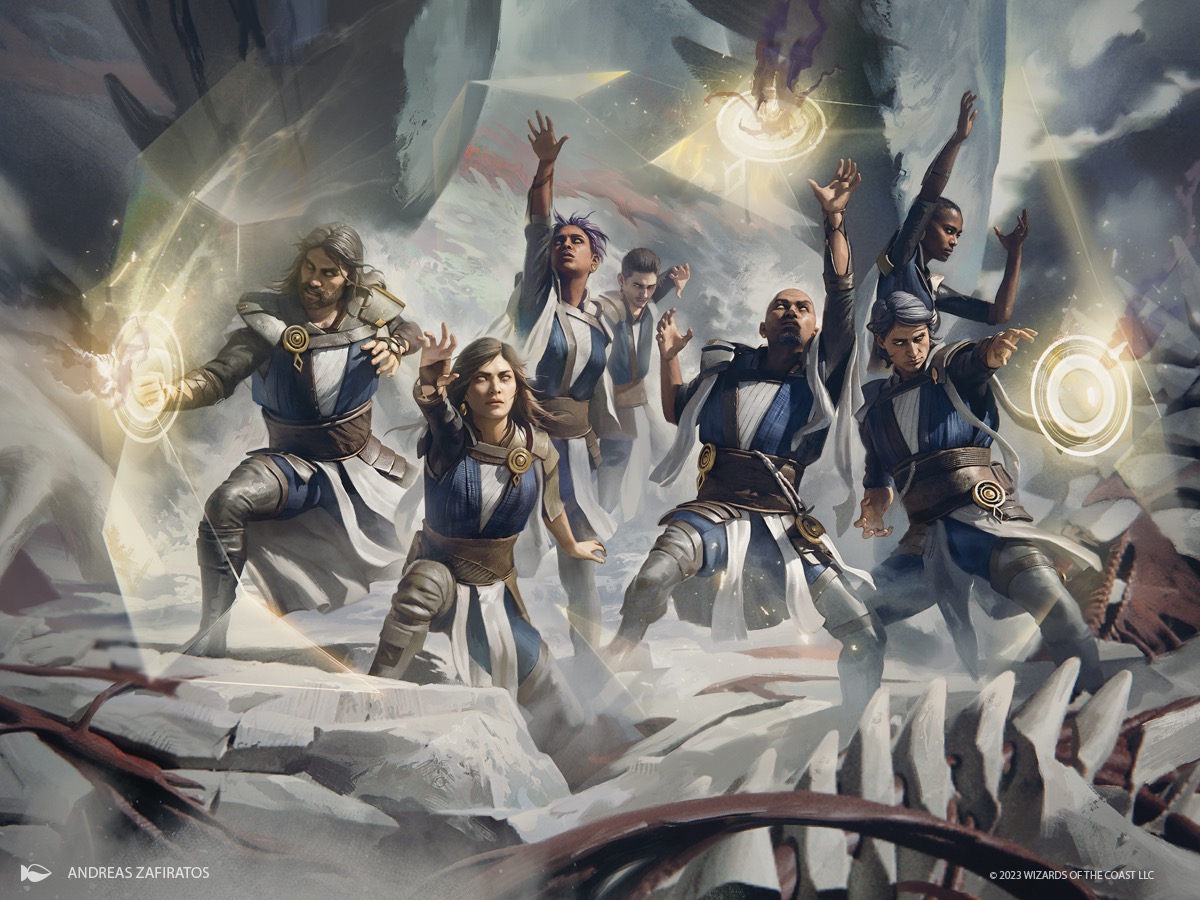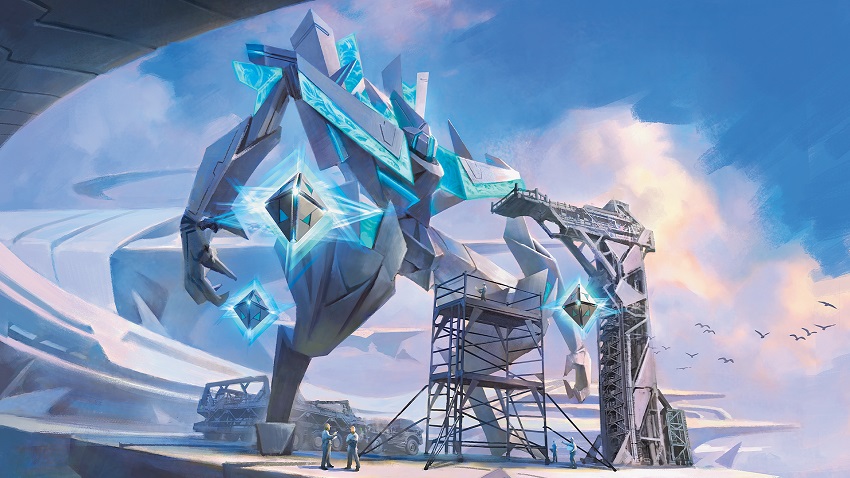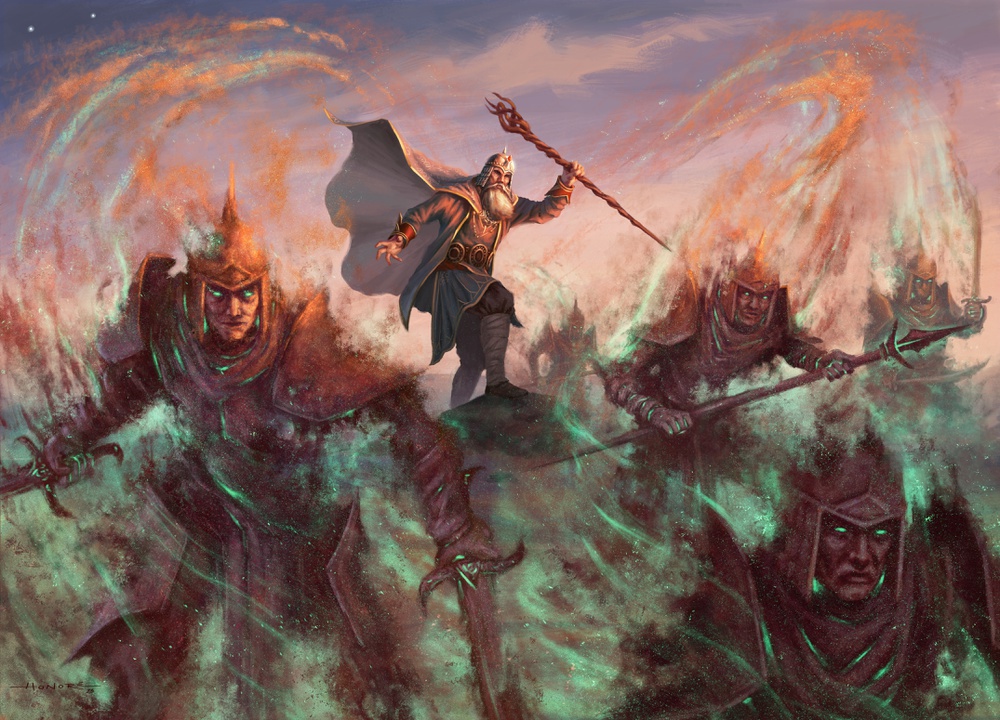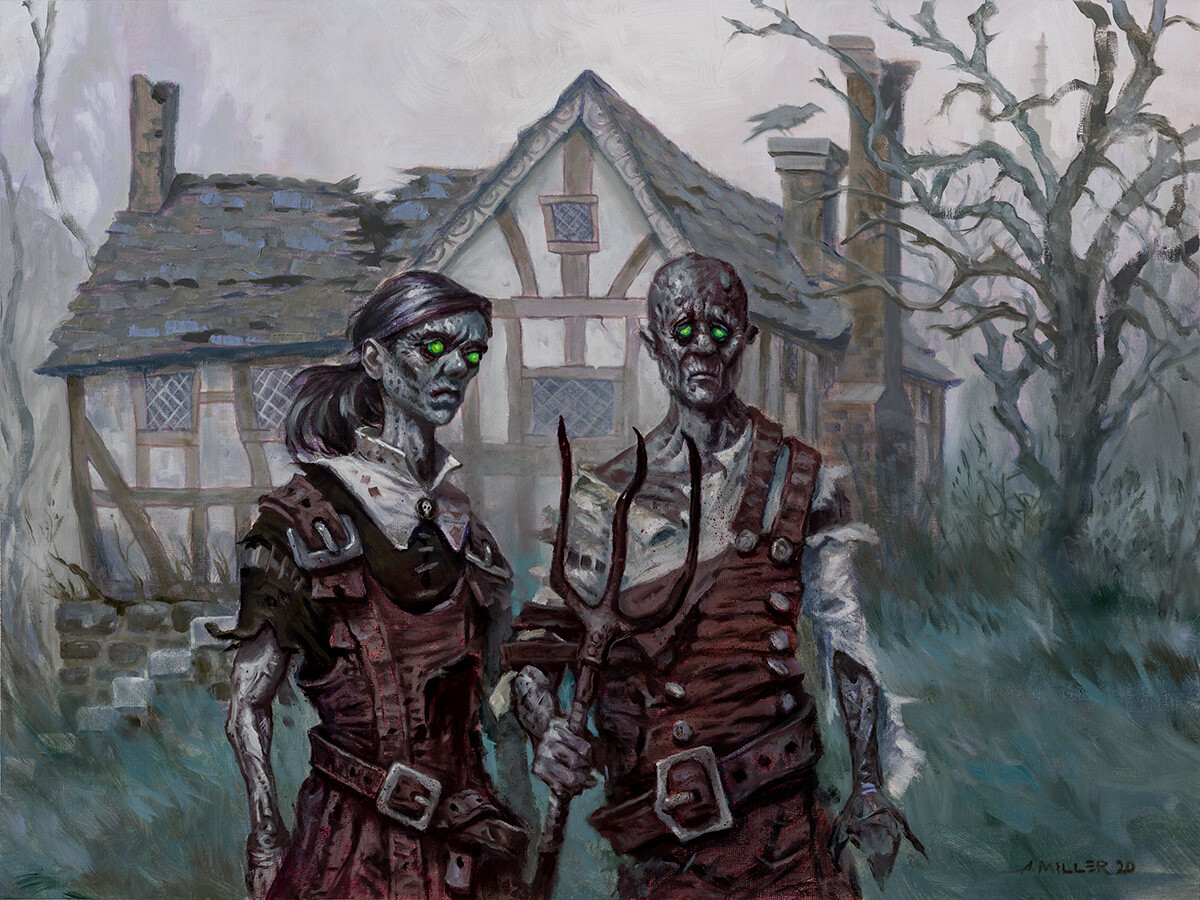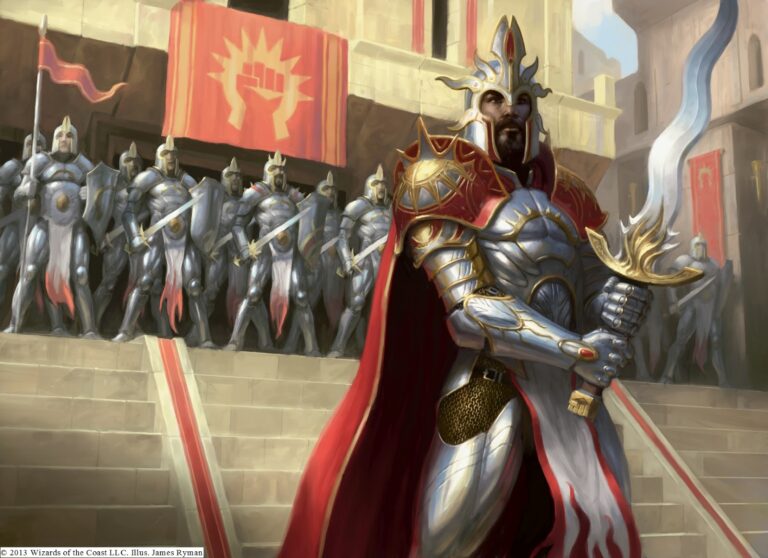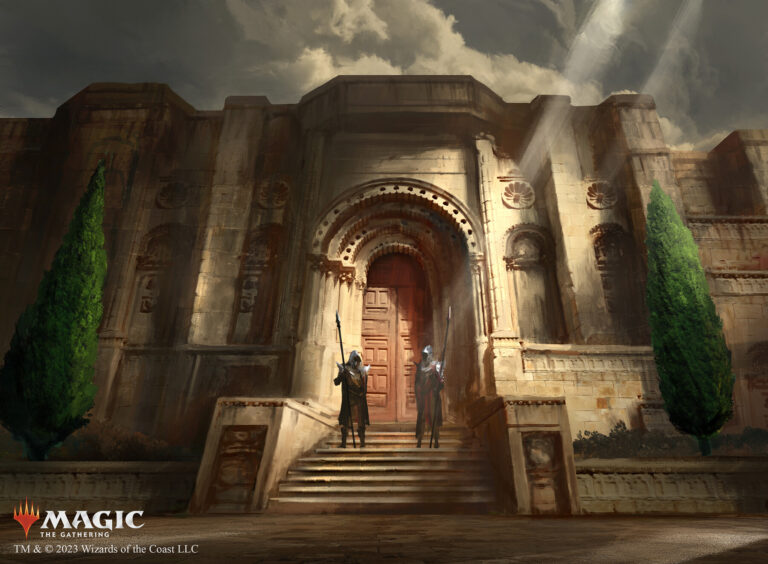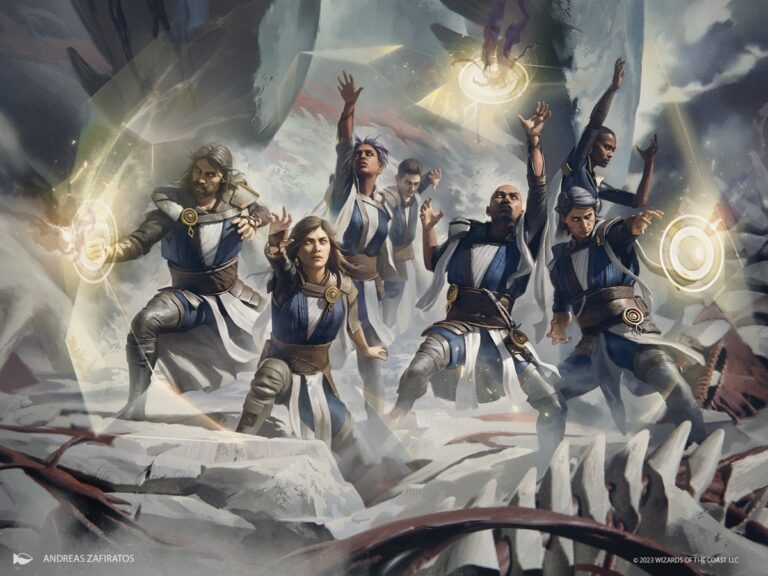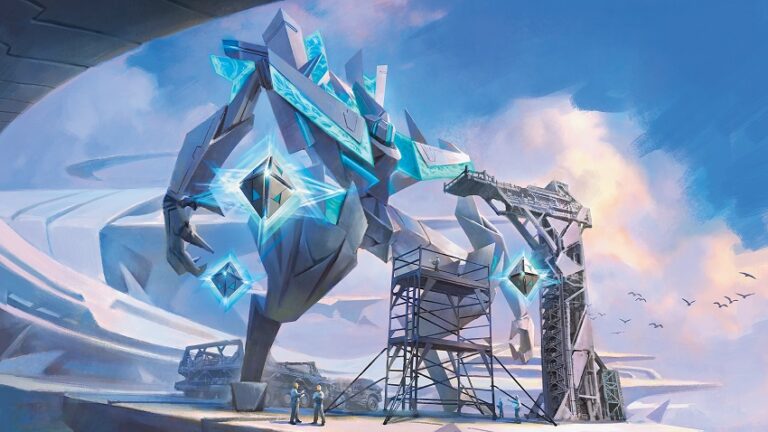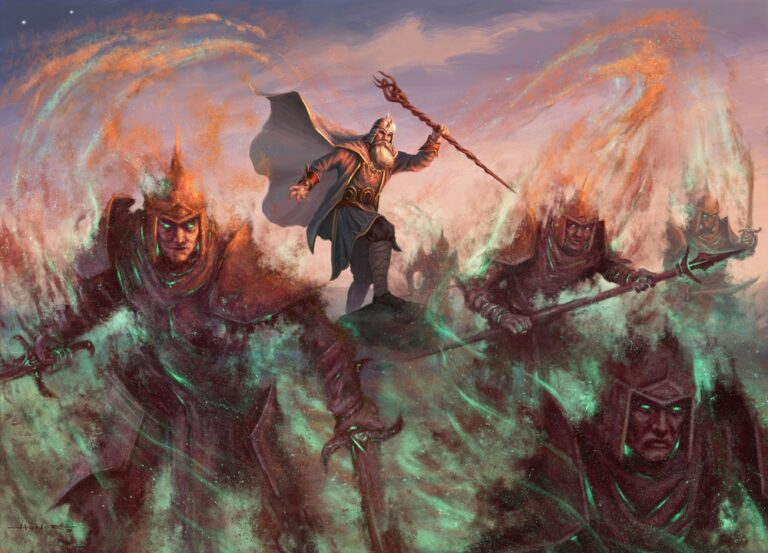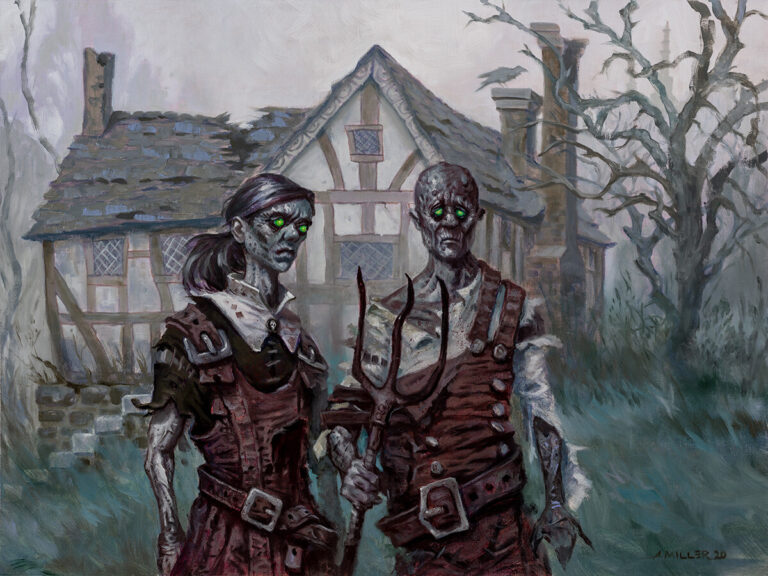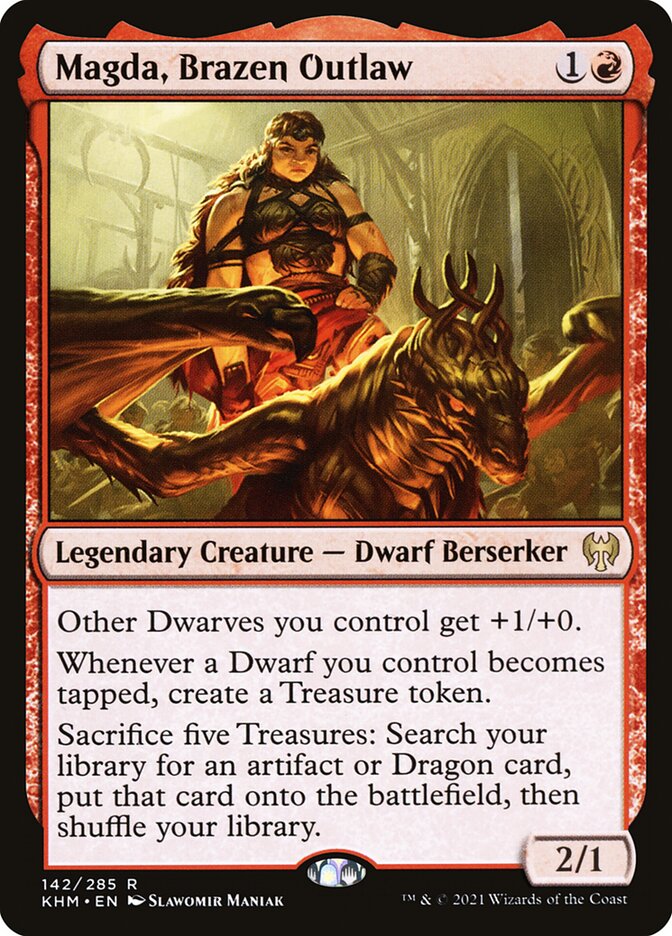
“Five simple treasures for a pint?” This is the question the poor patron will have to answer in the tavern of Magda, Brazen Outlaw, crowded with small, drunken dwarves with mustaches soaked in beer. Those five treasures will, in turn, be exchanged to allow Magda to create chaos in the tavern, initiating an almost unmanageable combo or tutoring something incredibly difficult for the opponent to handle. This Commander offers excellent potential in terms of interactions, mechanics, and combos, making it ideal for experienced players and those seeking fun without diving into other color pies, which might require a more complex and expensive mana base, all supported by a solid tribal plan. Additionally, from a results-oriented perspective, there aren’t many mono-red competitors.
I’m Andrea Bosco (Re del Commander on Moxfield) and today we’re discussing Magda, Brazen Outlaw, a 2-mana “Dwarf Berserker” with a 2/1 body. Magda not only acts as a lord by giving other dwarves +1/+0, but she also has an excellent static ability: “Whenever a Dwarf you control becomes tapped, create a Treasure token.” Additionally, she has a fascinating activated ability: “Sacrifice five Treasures: Search your library for an artifact or Dragon card, put that card onto the battlefield, then shuffle.”
Here is the decklist we’ll be discussing today.
Deck structure
The plan is simple and direct: start by deploying small, seemingly inconsequential dwarves to set up a subtle race, then bring out Magda, Brazen Outlaw at the opportune moment. Avoid casting her unless absolutely necessary—she is the engine of the deck, and without her, the deck’s purpose and potential are difficult to envision. Once she’s on the field, aim to generate at least five Treasure tokens, which you can sacrifice at instant speed to bring out:
- Sundering Titan to rudely dismantle your opponent’s board;
- Portal to Phyrexia to remove three of the opponent’s pieces, setting up a future game plan;
- Bogardan Hellkite to deal some damage here and there;
- an artifact such as Roaming Throne, Universal Automaton, Adaptive Automaton, Metallic Mimic, Academy Manufactor or Clock of Omens. Combinations of these artifacts will trigger a combo that generates “infinite” Treasure tokens, which can be sacrificed with the Commander to produce mana, draw cards, gain life, tutor for dragons and artifacts, and then deliver a decisive alpha strike to your opponent.
As previously mentioned, the linear nature of Magda‘s strategy provides a glimmer of hope for players looking for a straightforward yet relatively budget-friendly deck (without City of Traitors). However, it’s a common misconception to assume that a linear strategy equates to an easy deck or fewer lines of play. In reality, there are multiple methods to generate those five crucial Treasure tokens, and choosing the wrong approach can lead to detrimental outcomes. The strategy may be linear, but navigating it successfully requires careful decision-making to avoid self-destructive scenarios.
Let’s illustrate this with an example::
- Us: land, dwarf;
- Opponent: land, pass;
- Us: land, Magda, attack and create a Treasure;
- Opponent: land, pass;
- Us: land, fast dwarf, attack and create three Treasures;
- Opponent: land, board wipe… ouch!
- Us: land, Magda;
- Opponent: land, removal… ouch!
- Us: “I concede.”
Of course, we’re exaggerating to make the point clear, but as noted, the lines are complex and challenging. The key is understanding that Magda must first master her own strategy before countering her opponent’s moves. The deck features dwarves that individually have a minor impact on the board, but Magda’s abilities can turn the tide and win games on her own. However, it has a limited range of optimal responses to board issues, especially in terms of removal (Fury, Chain Lightning, Flame Slash, Lightning Bolt, Galvanic Blast, Abrade, Pyrokinesis, Stoke the Flames, Bottle-Cap Blast).
Magda benefits from a variety of mechanics that allow her to tap dwarves without the combat step. Notable options include vehicles that use tapping for the crew ability, lands requiring tapped creatures to generate colored mana (Holdout Settlement, Scene of the Crime, Survivors’ Encampment), Convoke spells, and artifacts that tap creatures for mana (Springleaf Drum). With numerous ways to generate the five crucial Treasure tokens, the real challenge is balancing speed and security to achieve this goal. This approach can be explosively effective, often leaving opponents with little recourse since these abilities can be activated at instant speed. However, be wary of hate cards that can disrupt this plan, such as Pithing Needle, Disruptor Flute, Opposition Agent, Stifle, Tishana’s Tidebinder, Tale’s End and similar cards.
Ultimately, this tribal strategy seems solid and consistent, but generating Treasure tokens alone is not enough to secure victory. Success also requires careful investment, much like a skilled accountant. Therefore, it’s generally advisable to avoid trading a dwarf for another creature unless you’re confident you’ll reach those crucial five Treasure tokens first.
Gameplan
The deck is primed to combo off at any moment, so let’s break it down. Magda, Brazen Outlaw creates a Treasure token whenever a dwarf is tapped, which sets up the foundation. Among your dwarves, some are also artifacts, such as Roaming Throne, Universal Automaton, Adaptive Automaton, and Metallic Mimic. Picture a board state with Magda, one of these artifact-shapeshifter dwarves, and at least five Treasure tokens.
Tutor Clock of Omens with Magda, Brazen Outlaw and Universal Automaton on the board. Tap Clock of Omens and Universal Automaton to untap Universal Automaton itself, generating a treasure with Magda, Brazen Outlaw. Then tap the newly created token and Universal Automaton to generate another treasure token… and keep repeating. Eventually, you’ll have a series of treasures to tutor for dragons and artifacts:
- with Roaming Throne you can duplicate activated and triggered abilities of dwarves (or dragons if needed)
- with Academy Manufactor you can create food and clue tokens along with treasures (to gain a lot of life or draw through your deck)
- with Bogardan Hellkite you can deal 5 damage around then play
- with Portal to Phyrexia you can clear the board
- with Lightning Greaves you can give haste to a creature
- and finally, having drawn through the deck, you’ll have enough damage to kill the opponent (e.g. with Magda, the Hoardmaster you can create 4/4 dragon tokens with haste and flying)
Matchup
Control
FFacing a Control deck isn’t always straightforward. Given that the deck is centered around Magda, losing track of the Commander’s tax count can spell almost certain defeat. Therefore, it’s crucial to avoid wasting Magda‘s uses, aiming to play her when you can generate treasures and activate her ability. Control decks often have a variety of removal spells, which can significantly slow down your game plan. Watch out for board wipes like Toxic Deluge, red-based options like Subterranean Tremors, Brotherhood’s End, or Fiery Confluence, and massive board wipes such as Farewell and Pernicious Deed, which also target artifacts. The best strategy is to maintain a steady, manageable aggression while incorporating utility pieces, especially when your opponent is tapped out (which will happen). These pieces are what give your strategy its explosive potential. Don’t forget the importance of Cavern of Souls, Ragavan, Nimble Pilferer, various vehicles, Winter Orb, Tangle Wire, Lightning Greaves, and Urza’s Saga. Avoiding time-loss plays is essential, as they can set you back significantly. If you can tutor, usually a Sundering Titan or Winter Orb is enough to disrupt your opponent’s aggressive strategies. Remember the evergreen plans with Blood Moon and Magus of the Moon, and land denial strategies like Dwarven Blastminer or Dwarven Miner.
Aggro
Aggro decks are relatively manageable. Use spot removal wisely and sparingly, keeping in mind its limitations. Focus on deploying dwarves, utilizing tap effects, and finding the right moment to play Magda and tutor for a board-stalling piece like Portal to Phyrexia or Bogardan Hellkite. Avoid using Magda to attack your opponent’s life total unnecessarily, as this might be a trap if your opponent has a hand full of spot removal, unless you are facing clear screw or flood conditions. Cards like Fury and Pyrokinesis are effective but be wary of protection spells like Flawless Maneuver, Reverent Mantra, or Flare of Fortitude, which are often difficult to anticipate.
Midrange
Midrange decks can be tough, as they often have cards designed to disrupt combos. Pay close attention to the game state, including the turn phases and identifying which player is on the offensive. Generally, the combo deck will be the aggressor, but be mindful of the instant-speed interactions that midrange decks likely have. Watch out for cards like Toxic Deluge, Fire Covenant, Opposition Agent, and similar threats.
Combo
Against other combo decks Magda is quite resilient. You have two strategies: racing or setting up your own combo. This dual approach can throw off your opponent’s plans, as they might struggle to keep up with both threats. Your primary goal is to execute your strategy faster than they can, because “the early bird catches the worm.”
Tempo
Tempo decks are generally manageable. Magda provides various avenues to reach your goal, allowing you to choose the most effective path. Additionally, Tempo decks lack board wipes, so you can establish a board presence with your small but annoying dwarves. Just be cautious of effects similar to Fury and Pyrokinesis, which can still be problematic.
As we’ve thoroughly analyzed, Magda is clearly a combo deck, so your hands should be aimed at finding a combination of cards that suggests a powerful play pattern. Hands that are slow or lack synergy are highly discouraged. Ideal hands include: three lands, 1 or 2 dwarves, a card that can tap dwarves, and either a spot removal or utility card.
Written by
Andrea Bosco

